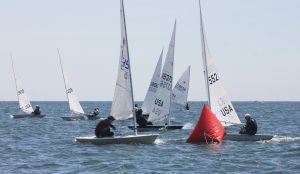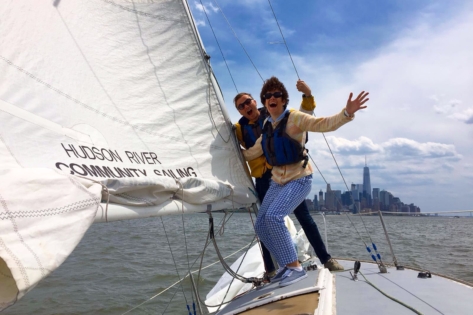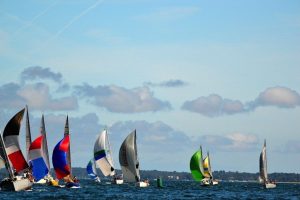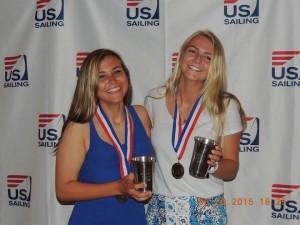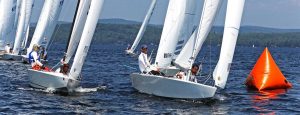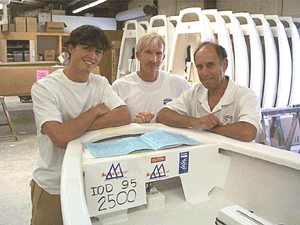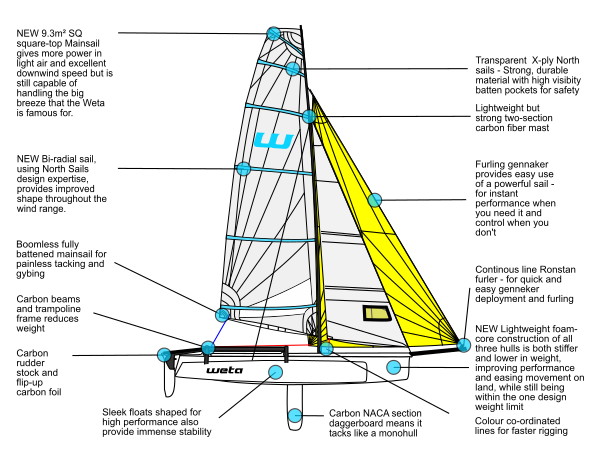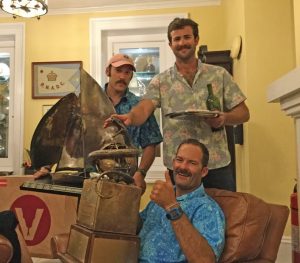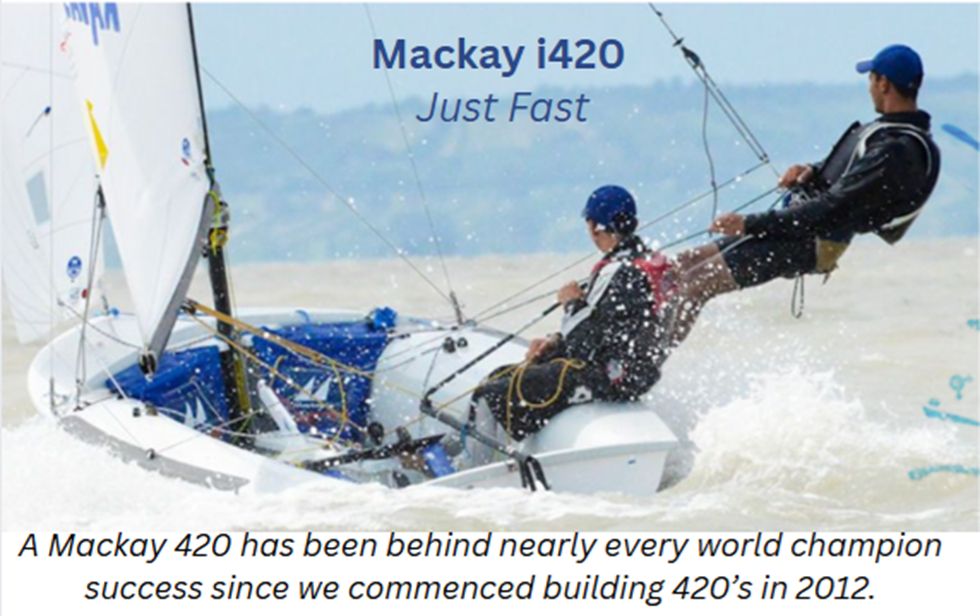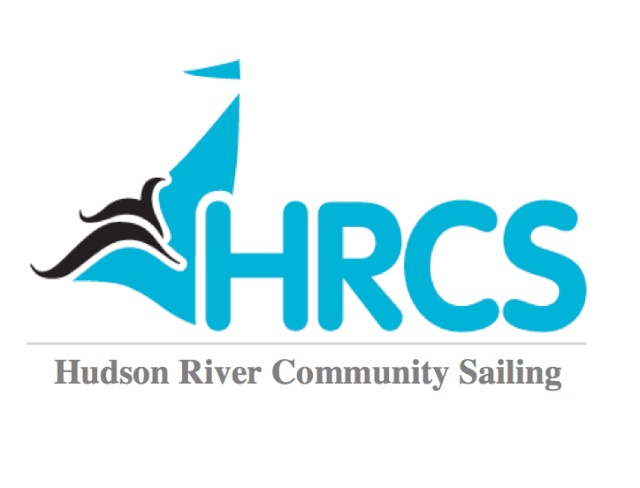
Founded in 2007 to serve the urban community, we partner with public schools to offer credit-bearing academic programs, internships, mentoring, and college readiness. Our youth development platform uses sailing, boat operation, and boat building to further academic skills and instill the qualities of character necessary for college and career success. We also serve the broader community through affordable marine education and recreation for individuals, groups, schools, businesses, and families.
NewsFlash: HRCS seeks a full-time professional Fleet & Operations Manager
We have 15 J/24s sailboats, the most popular keelboats in the world. They are small boats that are fast and sporty, while being stable and safe. The J/24 is typically crewed by 5 people. Get in on the fun and find out why the J/24 is a great boat to learn the ropes on! We also own a small fleet of Hobie Cats and a 28′ Precision pocket cruiser.
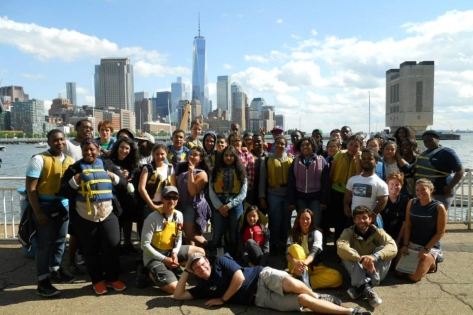
Club Profile: Fishers Island Yacht Club
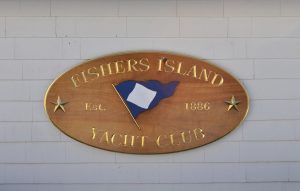
Fishers Island Yacht Club is located on Fishers Island in West Harbor. Fishers Island is located at the eastern entrance to the Long Island Sound. It is about two miles off the southeastern coast of Connecticut opposite Stonington. The island is about 9 miles long and 1 mile wide. Ferries run year round back and forth from New London, CT which is a 45 minute boat ride and during the week from Noank, CT which is a 20 minute boat ride. There is a low population during the fall, winter, and spring, however, the population rises to several thousands in the summer months.
The Yacht Club:
Fishers Island was founded in 1886, and it has always provided simple facilities for yachtsmen. As well as a club conducting a series of races and yachting events during the summer season. The club is relatively small with about 475 member families. The facilities include a 100+ slip marina, quant clubhouse, and marina facilities.
The Sailing:
Fishers Island Yacht Club has a very active fleet of racers competing amongst 6 classes; IOD, J70, Bullseye, Club 420, Laser, and Open Bic. Sailors of FIYC compete not only at Fisher Island, but have represented Fishers Island in the IOD and J70 classes nationally and internationally. FIYC has numerous world and national sailing champions as well as prior olympians. The club has a very active instructional junior sailing program offering novice through advanced coaching throughout the summer months. The keelboat class is especially inclusive of the junior sailors, offering them numerous opportunities to sail larger boats on the weekend. FIYC strives to create high level sailors, along with supporting adventure sailing and a love of the sea.
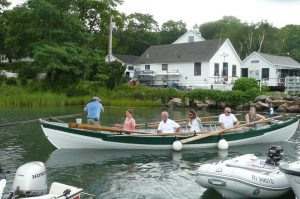
As mentioned before FIYC includes a 100+ slip marina and marina facilities. They welcome transient yachts up to 150’ and 9’ draft. The marina is centrally located and you can easily walk to several shops making it a great starting spot to explore the island. Fishers Island Yacht Club also welcomes other yacht clubs to use their facility for club cruises. Recently, the New York Yacht Club hosted their Annual Summer Cruise at FIYC. Nearly 1000 yachtsmen embarked on Fishers Island for a full day of activities including golf, tennis, and whale boat races.
Fishers Island Round Island Race:
Recently FIYC just held its 60th Fishers Island Round Island Race. This race takes place over Labor day weekend, and draws sailors from all over New England. Recently, over 80 boats competed in the race, including all the local one design boats as well as big boat classes. The race offers several challenges with navigating the treacherous currents of the “Race,” and numerous obstacles in the Fishers Island Sound. Following the racing competitors enjoy a stellar party back at FIYC to celebrate the race, and the ending of the summer sailing season.
For more information on Fishers Island Yacht Club check out their website: https://fiyc.net
S1D 2016 Youth Sailing Team of the Year Nominations Open!
Its’ that time of year again! Please send in your nomination for 2016 Youth Sailing Team of the Year!
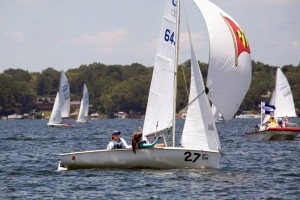
The award is presented annually, in January, and reflects the efforts of a youth sailing team throughout that previous calendar year. We actively encourage written submissions of nomination. If you’d like to nominate a team, please write a 200 word minimum letter, with regatta results, to [email protected].
Sail1Design currently seeks a title, exclusive sponsor for this award. To learn more, contact [email protected]
WINNERS
2015 – Stephanie Houck & Camille White
Club Profile: Downtown Sailing Center
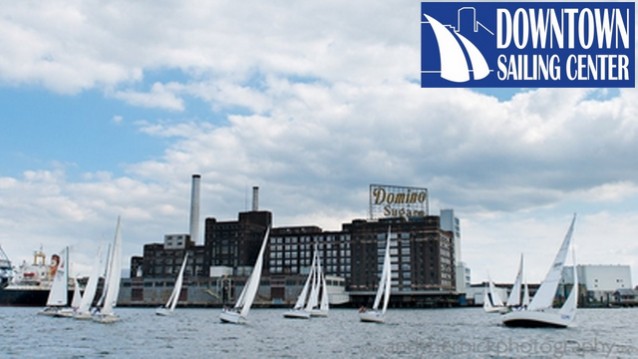
News Flash: Downtown Sailing Center is hiring 2 full-time positions, a Community Programs Director, and a Fleet & Membership Programs Director!!
The Downtown Sailing Center programs are available to the entire community. For adults, we offer adult education, recreational sailing open sails, Thursday Night Racing and cruising education. For youth, we offer junior’s camp, outreach programming that includes STEM curriculum, literacy education and Sailing Instructor Certification. For persons with disabilities we offer, accessible Saturdays, racing education and group outings.
“The Downtown Sailing Center provides quality education and life enriching programs that promote self-esteem and teamwork through the joy of sailing. The Downtown Sailing Center is committed to promoting an environment of inclusiveness and accessibility, especially to youth, persons with disabilities, and those with limited opportunity.“
We achieve our mission by:
- offering the community affordable access to quality sailing programs and events;
- providing education in sailing and water safety skills at all levels for all ages and abilities; and
- sponsoring both recreational and racing opportunities.
The DSC’s many sailing programs include junior day and overnight sailing camps, outreach programs for at-risk youth and persons with disabilities, adult lessons, cruising, open recreational sailing, corporate outings and team building, charters and racing.
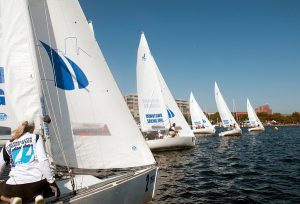
The Downtown Sailing Center’s (DSC) fleet of nearly forty boats, both daysailers and cruisers, as well as a handful of small powerboats. Many of the daysailers and all of the cruisers and powerboats have been donated to the DSC. Much of the fleet maintenance is performed by DSC members on a volunteer basis. Boats that are donated to the DSC are maintained — and, in many cases, restored — by members, then put into the fleet to be used in the DSC’s programs and activities. Many of the cruisers are offered for sale after being part of the DSC’s programs for three years.
Nominations Open for 2016 Youth Sailor of the Year!
Sponsored by KO Sailing, It’s that time of year again! S1D has already received nominations, so now is the time to write in and submit your nominations for:
Youth Sailor of the Year
Dedication. Perseverance. Independence. These are just some of the attributes of the go-it-alone sailor, the lone wolf who is able to train, plan, and compete by her or himself, and do it successfully. This award, presented by KO Sailing, goes to the North American youth sailor who best personifies the qualities necessary to be a successful athlete in the single-handed sailing world. If you think you know a deserving candidate for this award, tell us why in a 200 word minimum letter, to [email protected]. This award is presented annually, in January, after the preceding year’s full sailing season.
Dedication. Perseverance. Independence. These are just some of the attributes of the go-it-alone sailor, the lone wolf who is able to train, plan, and compete by her or himself, and do it successfully. This award, presented by KO Sailing, goes to the North American youth sailor who best personifies the qualities necessary to be a successful athlete in the single-handed sailing world. If you think you know a deserving candidate for this award, tell us why in a 200 word minimum letter, to [email protected]. This award is presented annually, in January, after the preceding year’s full sailing season.
Says Mark McNamara, president of KO Sailing, “KO sailing is a major supporter for competitive sailors between the ages of 8 and 18, helpin
Club Profile: Lake Sunapee Yacht Club
News Flash: LSYC is Hiring a Sailing Program Director!
Lake Sunapee Yacht Club is a family focused summer only club located on the western shore of Lake Sunapee in Sunapee NH. The club offers a wide range of adult and junior activities including sailing, tennis and swimming.
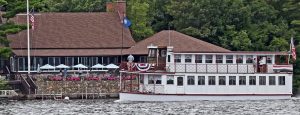
The LSYC is a private club, however Star sailing and regattas are open to non-members.
Lake Sunapee Yacht Club is seeking a Sailing Program Director to direct every aspect of the LSYC junior sailing program’s operation. The goal of the program is to teach the junior sailors the basics of sailing, sailboat racing and general boating skills. The Program Director will also create an environment for both the sailors and staff that prioritizes safety, learning, healthy competition and fun. Above all, he or she should be an excellent role model for the sailors. LSYC junior classes include Sail-For-Fun, all Opti levels, 420 beginner through 
2016 Optimist Sailor of the Year Award Nominations Now Open

Optimist sailing, for so many, is where it all starts. In fact, there may be no healthier one-design class in North America than the US Optimist Class. Sail1Design is proud to salute this boat, the people involved in the class, but most importantly, the kids who get out there and sail in this great little boat. This is the Lone Wolf in training, the next great singlehanded sailor! Last year’s Optimist Sailor of the Year, Luke Arnone, was a great choice. Who will it be this year? It’s up to you!
This award, announced each January, goes to the Optimist sailor, who in the evaluation of our judge panel (from nominated sailors), had the best overall sailing year, for the preceding calendar year.
HOW TO NOMINATE
This is YOUR award! We require written submissions of nomination; in fact we only choose from nominated sailors, and do not suggest nor solicit specific nominations. If you’d like to nominate an Optimist sailor, please write a 200 word minimum letter, with regatta results, to [email protected]. Please make sure we receive this letter before 31 DECEMBER 2016.
WHAT YOU WIN!
Thanks to McLaughlin, the winner will get 3 great awards in addition to the honor of winning:
1. A beautiful, framed & engraved 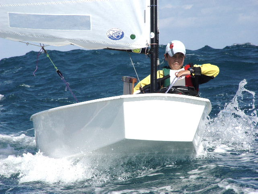
2. What’s more, and in keeping with the philosophy of both Sail1Design & McLaughlin, the winner will have the opportunity to give “the gift of giving”, or give back to sailing, and choose, on his or her own, an “up-and-coming” Optimist sailor to receive a FREE charter of a McLaughlin Optimist at a major US Optimist event on McLaughlin’s schedule! Sail1Design will help work out details of when and where this great gift is made.
3. Finally, the winner will ALSO receive his or her own free charter as well!
|
|
 |
|
| Eventually, California Snipe sailor and veteran boat builder Mike McLaughlin, who had worked at Chubasco most of his life, purchased the Snipe molds and moved the operation to Tennessee in response to the relocation of the International Snipe Headquarters to Chattanooga. Mike McLaughlin further expanded the company’s success and helped distribute the McLaughlin Snipe on a worldwide spectrum. Steve Sherman, Indiana lake sailor, and father of three boys (two of whom presently work at McLaughlin) purchased the company from Mike McLaughlin in ‘86. Thus began the materialization of his life long dream of contributing to the sport of sailing and in particular the Snipe class.  Steve Sherman, owner and head engineer from McLaughlin Boat Works, working with Luis Horta, IODA Chief Measurer. |
|
| Steve’s commitment to innovation and continual improvement combined with his natural curiosity and “hands on” approach led the company to successes in many classes. At one time the company built the Lightning, Day Sailor, Windmill, Highlander, Thistle and Tanzer 16. MBW has always taken pride in pushing the forefront of foam/composite technology, such as being one of the first, outside of the aerospace industry, to use a vacuum bag in performance sail craft back in the early 1980’s. That history of innovation and continual improvement are evident today in our new dust and climate controlled production facility | |
| Beginning in 1990, at the request of families from the St. Petersburg Yacht Club, Mclaughlin began a new tradition building its first International Optimist Dinghy. Today, Mclaughlin specializes in the Optimist and has become one of the leading manufacturers in the World. As Steve Sherman puts it, “the Optimist is the single most important element in keeping sailing alive and healthy in the world today. From the tens of thousands of children that learn to sail each year around the world will come the sailors, Olympians, instructors, coaches and commodores of tomorrow’s society. My dream of contributing to sailing has come true by a hundred fold.”
Holding true to the original ideas of Elms and Shear, MBW continues as a business run by sailors for the benefit of sailors. You cannot build a successful company without good people. MBW has assembled a group of like-minded sailors who believe that if you provide the finest in customer service and the best product money can buy the rest will take care of its self. This is why MBW is the premiere partner with the United States Optimist Dinghy class organization (USODA) and supporter of the International Optimist Dinghy Association (IODA). |
Madison Beach Club Summer Sailing Instructors and Race Coach
Weta Trimaran
Conceived and designed in New Zealand, over 1,300 Weta trimarans have been sold worldwide since it was launched with a splash over 11 years ago.
Hand-crafted – this is no “machine-built boat” – the fibreglass/carbon composite construction delivers the perfect pairing of rigidity and lightweight performance. Expertly made for maximum enjoyment and minimum fuss, whether you’re sailing all out solo, mixing it up with the family or teaching the kids to sail, the Weta is simple to sail, surprisingly quick, and an absolute ton of fun.
It fits into the space of a Laser on the custom trolley but takes only 20 minutes from stow to go with the lightweight carbon components making it easy to assemble.
New for 2017 are a Performance version with foam-core hull and floats making it both 12Kg (26Lbs) lighter and stiffer. And a new larger 9.3 SqM bi-radial square-top mainsail (SQ) compared with 8.3 SqM of the standard sail. The SQ gives more power in light air, excellent downwind but still capable of handling the big breeze that the Weta is famous for.
Sailing World, a major US magazine, awarded the Weta 4.4 Trimaran “Best Dinghy” in their 2010 “Boat of the Year” awards – read the review here In 2016 the Weta was approved for Paralympic sailing because of the combination of stability and performance it provides and it was also used for the World Masters Games in 2017 – with a fleet of 52 Wetas in Auckland, New Zealand. Find a Weta near you using the Weta World Map www.tinyurl.com/wetaworldmap
Fun, fast and easy, life’s better with a Weta!
Viper 640 International Championship Report & Results
Zeke Horowitz, Ian Coleman, and Brendan Healey Win Aspen Viper 640 International Championship sponsored by EFG
When it was decided that the Viper 640 sports boats would travel to Bermuda during November 2016 for its major regatta, everyone was looking forward to the big winds that prevail on the Great Sound at that time of year. Unfortunately on two of the days too much wind prevailed. The 4-day event, the Aspen Viper 640 International Championship sponsored by EFG, was held from Wednesday – Saturday, November 16-19, in conjunction with the 2016 North American Championship. The regatta came down to only six races over two days of sailing. As was the case on Thursday’s second day of the event when 25+ knot westerly winds with puffs well into the 30’s kept the racers ashore, the final day’s racing also had to be cancelled as the low hovering around Bermuda brought winds well in excess of 25 knots with puffs and frequent rain squalls crossing the Great Sound with wind speeds in excess of 35 knots.
It should be noted that a handful of crews did go for a sail Saturday morning inside the more protected waters of Hamilton Harbor and they were rewarded with spectacular downwind sleigh rides noting that had they been outside in the Great Sound it would been difficult for even the most skilled among the fleet to handle the strong, frequent puffs.
When International Race Officer and PRO Hank Stuart (Rochester, NY) raised Alpha over November, the sailors found the desire to race was countered by the desire to not break boats…or people. As such, Friday’s results for the 41 boats held fast. That allowed Zeke Horowitz (Annapolis, MD), Brendan Healey (Greenwich, CT), and Ian Coleman (Annapolis, MD) to take home both the International and North American Championship trophies. Justin Scott (Darien, CT) sailing with Rob Crane (Darien, CT) and Trevor Burd (Marblehead, MA) claimed second place, also winning the Governors’ Cup (top finishing skipper over 55 years of age). Geoff Fargo, Jeff Grange, and Spencer Steffen, all hailing from Santa Barbara, CA, were third and also the top placing Corinthian crew. Full results at http://yachtscoring.com/event_results_cumulative.cfm?eID=1577.
With sailors coming to Bermuda from across the U.S., Canada, Australia, and the UK, the competition was very tight. A look at the scores revealed that, with the exception of Horowitz’s winning 10 points, had the regatta sailed the final day the scoreboard would surely have been shuffled. Close competition, excellent courses, big breezes, and good sportsmanship prevailed throughout the racing; and ashore, event co-chairs Somers Kempe and Doug De Couto beautifully executed a logistically challenging regatta. Sailors were able to enjoy the hospitality and grandeur of both host clubs, the Royal Bermuda Yacht Club and the Royal Hamilton Amateur Dinghy Club.
When asked about his winning the International and North American Championships, Horowitz was proud of his accomplishment giving the credit to his crewmates Coleman and Healy. “When I joined the Viper Class I knew I’d be more competitive if I had a regular crew,” said Horowitz, “and I was able to talk two of my best friends into joining me on the boat. It helps that Ian and Brendan are both spectacular sailors. It was really great for the three of us to be racing 40 other Vipers on the beautiful island of Bermuda.”
While the Viper 640 Class has held its North American Championship for many years, this is the first time the Class hosted an International Championship. In doing so, it was necessary to have a new perpetual trophy and a sculptor was commissioned to create a piece of art reflecting the Viper’s growing global presence. What he came back with is a unique bronze sculpture that will definitely stand out in any yacht club’s trophy case. Below are pictures of the trophy and Horowitz’s crew holding both the International and North American trophies.
The winning trio: Zeke Horowitz (hat), Ian Coleman, and Brendan Healey (seated)
The regatta concluded Saturday night at the RHADC with a cocktail party and prize giving bringing everyone together one last time. As has been noted in the past, in addition to the great boats these men and women sail, they find the camaraderie among Viper sailors and the international friendships that have developed over years keep them coming back. There were sailors in their early 20s and in their 70s racing competitively, there were parent/child crew combinations as well as husband and wife teams. Of note was the seventh place team comprised of two married couples: Peter and Rachel Beardsley sailing with Jay and Rachel Rhame. Rachel Rhame sailed as hard as anyone on the course despite being five months pregnant. The joke was if they were sailing 4-up or 5?
The sailors were treated to not only the benefit of having an International Race Officer (Stuart) running the races, but they also were served by an International Jury headed by Bermudian IJ Robert Duffy. And, as is the case with most regattas of this magnitude, it would not have been possible to be held without the cooperation and support of the many sponsors including: presenting sponsor Aspen RE, long-term Viper 640 Class sponsor EFG, host sponsor the Bermuda Tourism Authority, shipping sponsors Bermuda Container Line, Bermuda International Shipping Ltd, Somers Isles Shipping Ltd, and Bermuda Forwarders and supporting sponsors Goslings, Gubinelli Wine, Oleander Cycles, Newstead Belmont Hills, and Island Construction.
You can see great regatta photos and video at https://www.facebook.com/2016Viper640InternationalChampionship/?fref=ts with daily recaps at www.viper640.corg.
Contact: Edward Padin, Viper 640 Class Administrator, [email protected]
About Aspen Reinsurance
Aspen Re is a diversified, well-capitalized and strongly rated company that provides carefully tailored underwriting solutions in select markets where we can add a high level of value. Aspen Re’s progress is built on the ability to identify and respond swiftly to emerging opportunities and to operate across a wide range of countries and specialist business lines. Aspen Re is founded on a thorough understanding of client needs, as well as exceptional expertise in assessing and managing risk. The company focuses on building long-term relationships with clients who have track records for sound underwriting, along with exposures that make risk transfer a vital aspect of their business needs.
Aspen Insurance, 141 Front Street, Hamilton HM19, Bermuda
www.aspen.co
About EFG International
EFG International is a global private banking group offering private banking and asset management services, headquartered in Zurich. EFG International’s group of private banking businesses operates in around 30 locations worldwide, with circa 2,000 employees. EFG International’s registered shares (EFGN) are listed on the SIX Swiss Exchange.
EFG International has been the primary supporting sponsor of the Viper 640 Class since 2011. Every year, Viper sailors around the world competing in quailifying events leading up to the EFG Viper Pan-American Championship sailed each March in Miami, FL, as part of Bacardi Miami Sailing Week presented by EFG.
EFG International AG, Bleicherweg 8, 8001 Zurich, Switzerland
www.efginternational.com
About the Viper 640
The Viper 640 is a high-performance one-design sport boat. At 21 ft (6.40 m) and only 750 lb. (340 kg) it combines the stiffness of a keelboat with the acceleration and planing abilities of a dinghy. The Viper has a precise and exhilarating feel on the helm, a spacious cockpit for three or more people, strict one-design class rules, and ease of launching by ramp or hoist. With fleets and regattas around the world, there is certainly Viper racing near you.
For more information contact Viper 640 Class Association Administrator Ed “Buttons” Padin ([email protected]) or Rondar Raceboats’ Dan Tucker ([email protected]
www.viper640.org
Start hiring for summer 2017!
By Airwaves writer Taylor Penwell
The dust from the summer program might be settling but if you are involved in a junior sailing summer program, you know that it requires year round attention.

If you aren’t lucky enough to have a person returning for the position, then it is time to start looking for the next candidate. Lets look at the possible timeline. If you listed the job posting the beginning of this November, it would take the hiring committee members a number of weeks to accept, review, interview and discuss the candidates. This process can done as quickly as a few weeks or can last months, often with the hiring committee left scrambling for a person when the summer program is about to start.
For this article we will say it will take two months to hire a suitable candidate for the job. Now it’s January of 2017. If the new leader is coming from outside the program, they’ll have to be brought up to speed on the program, its history, and how the basic operation has been running and their expectations for the next summer. Even if the person is being promoted from inside the program, they have to familiarize themselves with what is to be expected. No one can fully understand all the expectations until they day they take the position.
The director/head instructor’s next step after familiarizing themselves with the program is to staff their instructors and coaches. They should start by deciding whom from last year’s staff they would like to have for the next summer. This is where communication between the old director/head instructor and new one is important. They can discuss staff member’s strengths and weaknesses. Next, offers should be made to those staff members who will fit next year’s programs visions. It is imperative that these offers start to be sent as soon as can be. These offers should start being made in January.
Most junior sailing programs staff consists of young members in high school, college, or recent college graduates. In my experience as a head instructor I have found two common problems when staffing the junior sailing program. The first problem is that candidates change their minds. People will often agree to the job only to back out when the summer is right around the corner. The second problem is that people have plans for their summers a long time in advance. This could include studying abroad, traveling or maybe working at a different yacht club and if that happens you are already too late!

It is never too early to have staffed your summer program. That is if you have the returning staff and new staff members you are satisfied with. Just like the saying goes, the earlier, the better. It will give you room to work with if the staff hiring process takes longer than expected, or like mentioned earlier, you have someone bail.
Remember to use Sail1Design for posting all job vacancies for your program! Sail1Design is the best place to list for all jobs concerning junior sailing. Sail1Design is also a great place to list your resume for programs and yacht clubs to search for needed candidates. http://sailingjobs.sail1design.com/
We also have a very deep and large RESUME DATABASE available!
Thanks for reading and happy hunting!
Coaches Locker Room: The Importance of Teaching Sportsmanship To Our Young Sailors
By Airwaves writer Racheel Bennung
Coaching sailing is a great job, whether you do it full time, part time, or seasonal, nothing is greater than being on the water teaching our youth the joy of sailing. However, sailing can also be one of toughest sports to teach. One of the biggest reasons for this is because we are a self-policing sport. You won’t see any referees or umpires out on the course most of the time, so we as sailors must be honest and sportsmanlike on the water. This can be a hard concept to teach young sailors, since most other sports have someone else making the calls for their mistakes. Now they must be honest even when maybe no one saw their foul. This is why teaching the rules and sportsmanship to our young sailors is so important, and will lead to better and honest sailors.
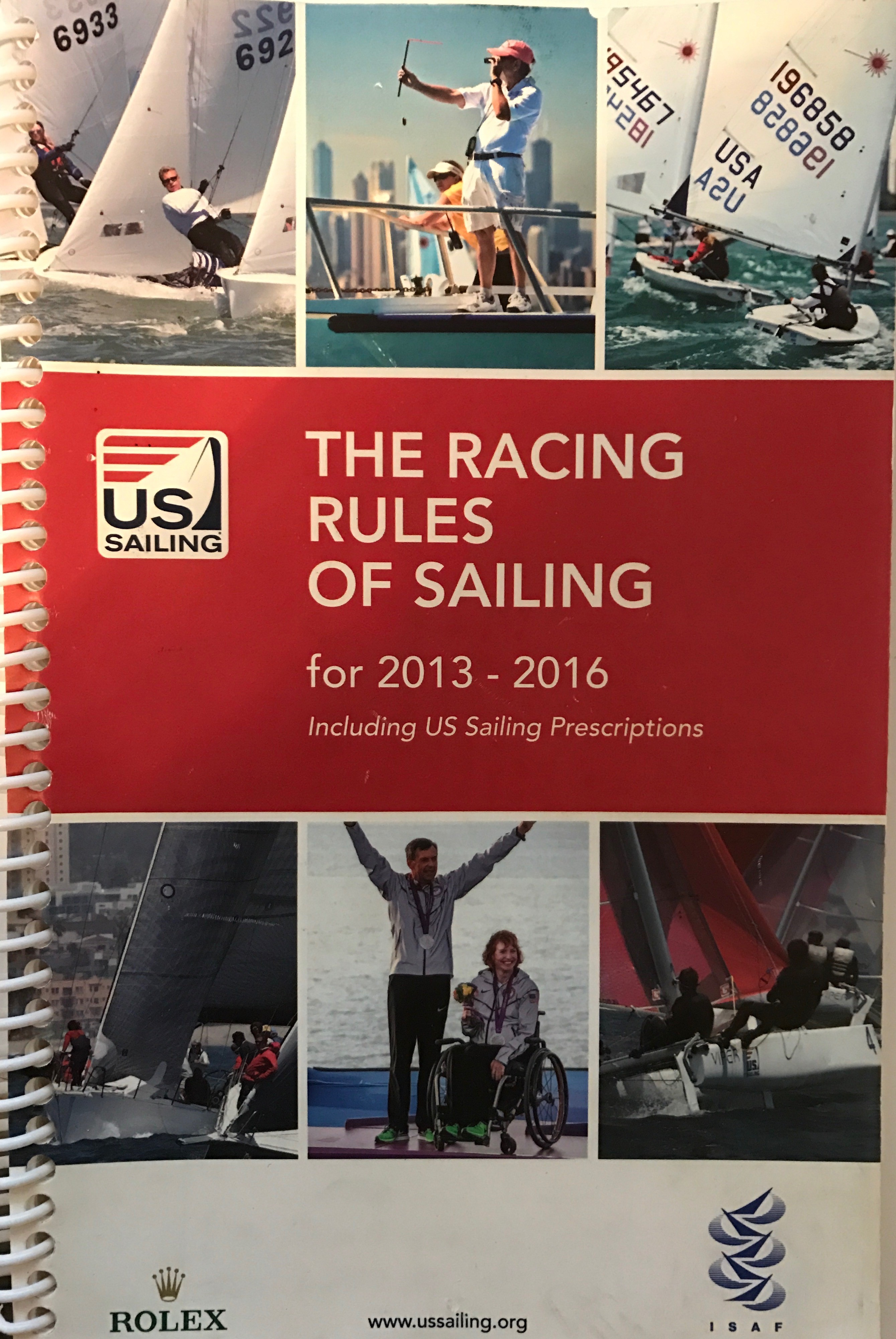
Let us begin with teaching the rules to your sailors. The rules are complicated, and a challenge to teach to your sailors. Even sailors who have been sailing all their lives have to look at the rule book to check themselves now and again. So how do you teach this complicated subject to your young sailors. Below are three tips for how best to teach your sailors the rules of sailing.
Tip #1: Make it age and ability appropriate
First thing is you want to make sure you are teaching your group appropriately. Teaching the rules to beginners that are 8 years old and beginners that are 14 years old are going to done very differently. So first, you want to identify your group and build your lesson plan off their age and ability. For beginners that are young, you should start with visuals lessons on what the rules are. You want to make sure you are going over the basics and not getting to in-depth. Intermediate groups that are a little older you can dive a little deeper, and start getting into what the rules state in the rule book. Make sure you stick to the bigger rules that they would see out on the race course. For our advanced sailors that are older you can get more into the rule book. You can have longer chalk talks, and really get into the nitty gritty of the rules.
Tip #2: Use the indoors, outdoors, and on the water to teach
Teaching the rules to young sailors needs to be interactive. We need to incorporate them into the teaching so they 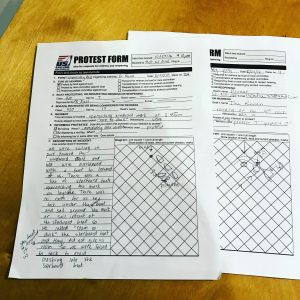
Tip #3: Make it fun
Making the rules fun is very important! If you just give your group a chalk talk on the rules every once in a while they will have a pretty boring time. So you want to make it interactive and fun for your group. Getting them involved and having fun with learning the rules will enable them to retain the information better then you just lecturing them. Lectures are important, and should be done, however, we need to make it fun for our sailors so they want to learn more!
Now how to do you teach good sportsmanship to your young sailors? As a young sailor it can be hard for them to grasp the concept of: “I hit a mark and no one saw it do I really have to spin?” We need to explain in great detail the importance of sportsmanship out on the water to our sailors. This is the foundation of the rule book, and we need to share its importance to our sailors every time they get on the water. Some great ways and things to teach sportsmanship to your sailors are:
- Team building activities.
- Talk as a whole on what makes a good sport.
- Teach your sailors its not all about winning.
- Teach your sailors that sportsmanship also means not only following the rules, but enforcing them.
